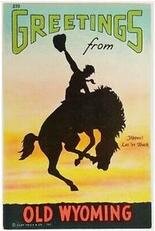Well.... off the top of my head, a 225°F pit temp is magic for at least two things: fatties and prime rib.

Oddly enough,
one answer to your question relates to the boiling temperature of water. But we need to take a ride on the 'way back' machine to get the whole story.... Before modern day rubs, or injections, and way before meat was engineered.... the old barbecue men cooked low-n-slow, and taught low-n-slow methods. The methods were handed down from generation to generation. Open pit barbecue was the predecessor to the evolution of modern day cookers, and nearly every barbecue man basted (mopped) the meat.
Smoky Hale,
(The Great American Barbecue & Grilling Manual) is one of the self proclaimed 'Old Basters' in the world of barbecue, and a great story teller, cooked most things at low pit temps. He defined barbecue this way:
Barbecue
Meat cooked in the dry heat of wood coals at temperatures around the boiling point of water (212*F at sea level). An essential distinction from other forms of cooking is the temperature at which it is cooked. The lower temperature allows the meat to become tender while preserving its natural juices and the exterior does not dry out before the center becomes done. The long cooking period allows for myriad savory seasonings and provides ample opportunity for pleasurable activities. The consummate barbecuer excels in the latter as much as the former.
The problem with this philosophy is that in the 20's, 30's, 40's and so on..... thermometers were rare. Heck, I didn't have a pit with a proper thermometer or a fast read thermometer until maybe 25 years ago. Anyways, the old school barbecuists cooked by sight, by listening to the meats sizzle and by feel. Barbecue is very hands on, and that is a tradition that should be carried forward.
 275
and a 2 hour rest. Didnt mess with it at all but want to try some new things for my next brisket. What are your thoughts on spritzing with apple cider and also using wagyu beef tallow when you wrap it.
275
and a 2 hour rest. Didnt mess with it at all but want to try some new things for my next brisket. What are your thoughts on spritzing with apple cider and also using wagyu beef tallow when you wrap it.








